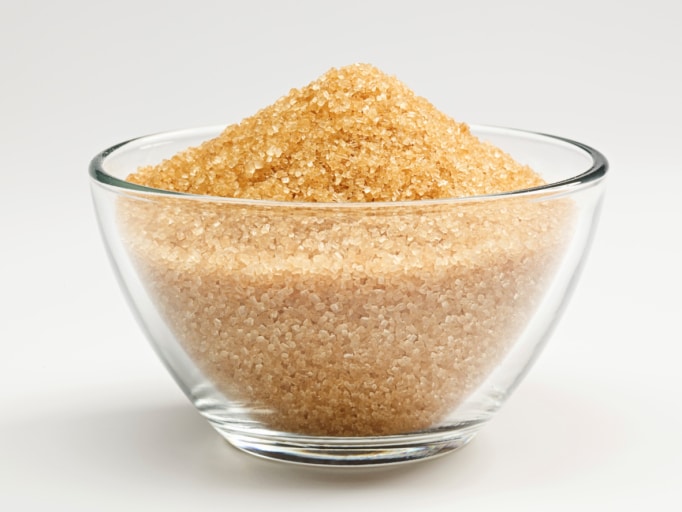The Trip of Cane Sugar Processing: From Harvest to Crystals
The Trip of Cane Sugar Processing: From Harvest to Crystals
Blog Article
An Extensive Guide to the Environmental Effect and Sustainability Practices in Walking Stick Sugar Processing
The environmental effect of walking stick sugar handling offers an intricate selection of obstacles that warrant careful examination. From soil degradation and excessive water use to the carbon impact connected with farming and manufacturing, the consequences of standard techniques are significant. In contrast, the adoption of ingenious sustainability steps provides a pathway towards extra liable manufacturing techniques. Comprehending the interplay between these concerns is essential for stakeholders in the industry. What details techniques can be carried out to strike a balance between performance and ecological stewardship? The responses depend on a more detailed check out both the difficulties and potential remedies.
Introduction of Cane Sugar Handling
Cane sugar handling involves a series of organized steps that transform sugarcane into polished sugar. Initially, collected sugarcane is carried to refining facilities, where it undertakes cleaning to eliminate dirt and debris. Following this, the walking cane is crushed to draw out juice, which is after that clarified by eliminating contaminations through home heating and the enhancement of lime.
The made clear juice undertakes evaporation, where water is eliminated to focus the sugar web content. These crystals are divided from the continuing to be syrup using centrifugation, resulting in raw sugar.
The end product is then dried and packaged for distribution. Throughout this entire process, maintaining efficiency and quality control is necessary to make certain the sugar fulfills sector criteria. Each action in walking cane sugar handling not just adds to the end product however likewise has ramifications for resource use and waste generation, setting the stage for discussions on sustainability and environmental impacts related to sugar manufacturing.
Ecological Obstacles of Manufacturing
The manufacturing of walking stick sugar presents several considerable ecological difficulties that warrant focus. One primary problem is the extensive use agrochemicals, consisting of fertilizers and pesticides, which can result in soil degradation, biodiversity loss, and contamination of local water resources. The overflow from sugarcane fields typically brings these chemicals into neighboring ecological communities, interfering with marine life and impacting the health of communities reliant on these water bodies.
An additional difficulty is the high energy intake connected with sugarcane processing. The boiling and refining phases need substantial warmth, mostly generated by melting fossil gas, adding to greenhouse gas exhausts. Furthermore, the expansive acreage required for sugarcane farming can cause deforestation and environment destruction, more intensifying environment modification and threatening wildlife.
Moreover, the labor methods in some regions increase ethical worries, as workers might face bad working problems and inadequate incomes. This situation usually continues a cycle of destitution in local neighborhoods. Cane Sugar Processing. Addressing these environmental obstacles is essential for creating more sustainable techniques in cane sugar manufacturing, inevitably benefiting both the atmosphere and the areas involved in this market
Water and Land Usage Influence
Water sources and land use are critical elements in the walking cane sugar sector that substantially influence the environment. The cultivation of sugarcane needs significant water input, with price quotes recommending that it can take in approximately 2,000 litres of water per kilogram of sugar produced. This extensive use of water frequently causes deficiency of local water resources, affecting not only the sugarcane vineyards however additionally bordering ecosystems and communities that rely upon the same water sources for agriculture and domestic use.

Furthermore, land usage for sugarcane growing can lead to logging and the conversion of natural habitats into monoculture vineyards. This practice reduces biodiversity, disrupts regional communities, and adds to soil deterioration. The development of sugarcane fields commonly encroaches on useful farming land, creating competition for resources in between food and biofuel manufacturing.
Sustainable methods, such as enhancing watering techniques and executing plant turning, are important to reduce these influences. By embracing a lot more reliable water use and land management techniques, the walking stick sugar market can lower its eco-friendly impact, guaranteeing a balance between agricultural efficiency and ecological conservation.
Greenhouse Gas Emissions
Greenhouse gas discharges stand for a considerable ecological worry within the walking cane sugar handling sector, specifically as farming techniques broaden to fulfill international need. The growing of sugarcane, a plant that grows in index tropical climates, relies heavily on synthetic plant foods and chemicals, which add to laughing gas discharges. Furthermore, land-use modifications, including deforestation for brand-new sugarcane haciendas, launch carbon dioxide kept in greenery and soil.
During handling, power consumption is an additional significant source of greenhouse gas exhausts - Cane Sugar Processing. Lots of sugar mills utilize nonrenewable fuel sources to power equipment and generate warmth, causing significant carbon footprints. Moreover, the transportation of raw sugarcane and ended up products includes layers of discharges through gas combustion in lorries
This involves assessing existing agricultural methods, refining methods, and transportation systems to determine locations for renovation and reduction. Addressing greenhouse gas discharges is crucial for fostering a much more sustainable walking stick sugar sector in a changing climate.

Lasting Practices and Innovations
Sustainable methods and innovations are significantly important in the cane sugar processing industry as stakeholders seek to reduce environmental influences while preserving performance. One considerable advancement is the application of incorporated crop monitoring, which enhances source use by integrating dirt management, bug control, and crop rotation strategies. This method improves return while reducing chemical inputs and protecting soil health and wellness.
In addition, the adoption of sustainable power sources, such as biomass from sugarcane residues, has actually obtained traction - Cane Sugar Processing. By converting waste items right into energy, processing centers can decrease their dependence on fossil fuels, consequently decreasing greenhouse gas emissions
Water administration techniques have actually also seen improvements with the recycling and reusing of water in handling plants, significantly decreasing freshwater usage. Advancements in modern technology, such as precision agriculture, enable farmers to keep track of plant wellness and source use better, ensuring sustainable cultivation practices.
Additionally, accreditation programs like Fair Profession and Rainforest Alliance encourage environmentally responsible farming practices and promote social equity within the supply chain. By embracing these sustainable practices and innovations, the cane sugar processing sector discover this info here can boost its strength and add favorably to ecological stewardship.
Final Thought
The ecological effect of walking stick sugar processing presents significant obstacles, consisting of dirt deterioration, high water consumption, and greenhouse gas emissions, along with moral worries associated with labor methods. Dealing with these concerns through sustainable practices, such as incorporated crop management, renewable power fostering, and water recycling, is vital. By promoting socially equitable and eco liable approaches in sugar check here production, the industry can minimize its negative effects, ensuring a much more sustainable future for both ecosystems and areas included in this industry.
Walking cane sugar processing involves a collection of systematic actions that transform sugarcane right into refined sugar. Each action in cane sugar handling not only contributes to the last product yet likewise has effects for resource usage and waste generation, establishing the phase for conversations on sustainability and environmental effects associated with sugar production.
Greenhouse gas exhausts represent a substantial environmental worry within the cane sugar processing sector, particularly as farming practices broaden to fulfill global need.Lasting practices and advancements are increasingly important in the walking cane sugar processing market as stakeholders look for to lower environmental effects while keeping productivity.The environmental effect of cane sugar handling offers significant obstacles, consisting of soil degradation, high water usage, and greenhouse gas exhausts, along with ethical issues associated to labor techniques.
Report this page